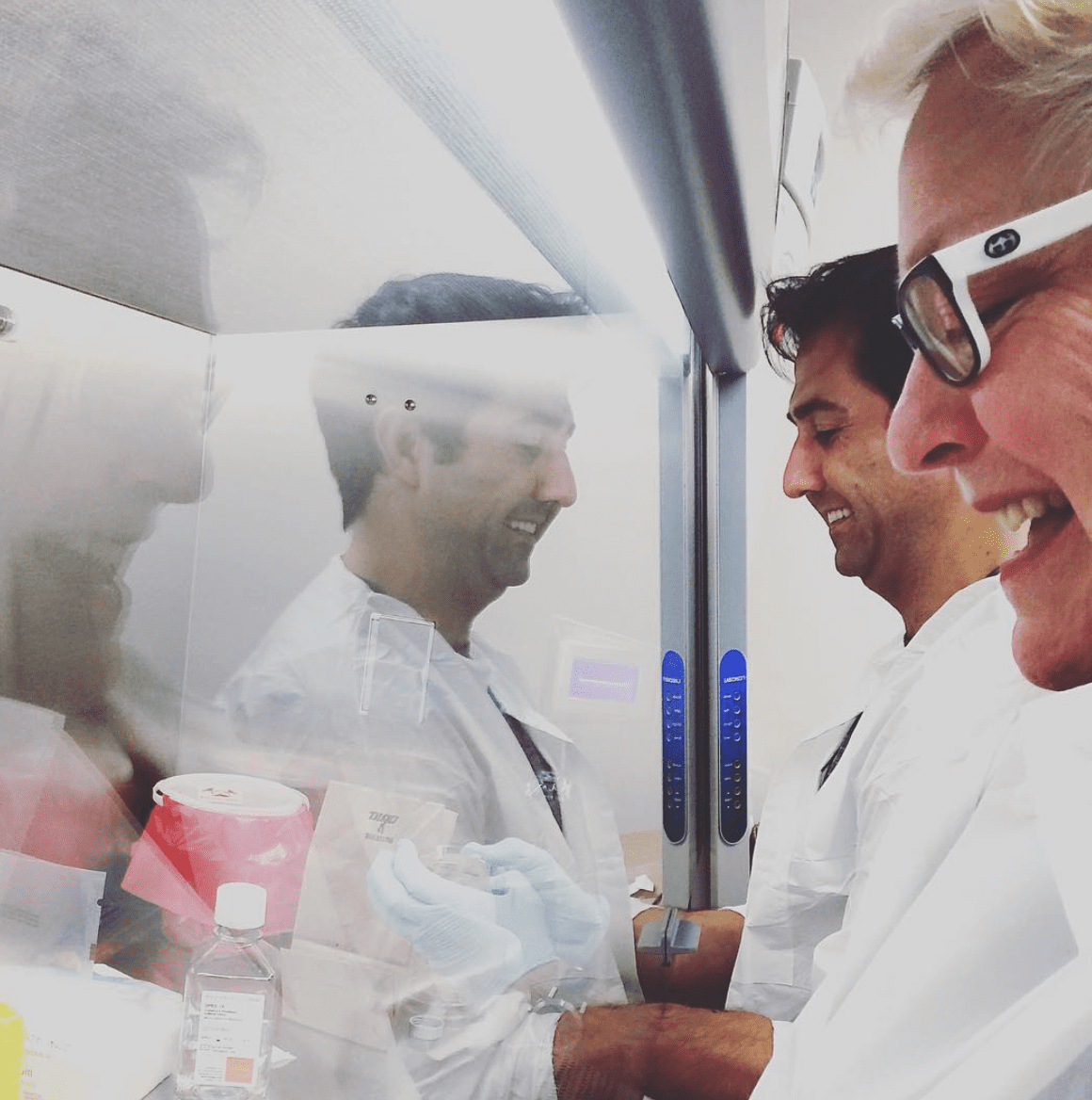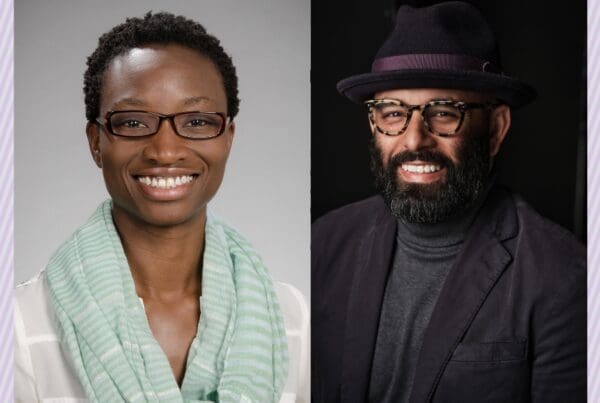Editor’s note: We’re rerunning our article on the collaboration between artist Kathy High and microbiome expert Will DePaolo, who will discuss their work Oct. 1 at CMiST’s first-ever symposium.
Kathy High thought she knew every unpleasant detail about life with an inflammatory bowel disease. After all, she’s lived with Crohn’s disease for more than 40 years.
Then one day she peered into a petri dish and got a punch to the gut. The dish contained a culture of bacteria grown from her stool sample. If the sample had been taken from someone without Crohn’s, it would have been overflowing with beneficial bacteria called lactobacilli.
Her petri dish looked as desolate as the moon.
“You can understand these things theoretically: ‘OK, my gut is deficient in certain kinds of bacteria,’” said High, a visual/media artist. “But seeing a void, literally seeing that absence, was very moving.”
That image of absence has moved others as well. High photographed and shared it as part of an ongoing collaboration with Will DePaolo, associate professor of medicine and director of the Center for Microbiome Sciences and Therapeutics (CMiST). DePaolo created an artist residency in his lab to help communicate science to the public, and High is his first resident.
Together, they make … poop art.
Go ahead. Giggle. High expects and encourages it.
“A lot of my art is absurd and ridiculous,” she said. “This is the quintessential taboo. The good thing about getting people to laugh is that they open up. And once they’re open, you can take them into a new territory.”
Where DePaolo and High want to take people is on an intellectual adventure into the microbiome: the teeming universe of bacteria, viruses, fungi and their collective genetic material that dwell inside of us. DePaolo and other researchers keep finding that universe more and more fascinating. What happens in our guts seems to impact the body far beyond the belly.

By working with artists like High, DePaolo said, his lab can help communicate the complexities of gut science and the importance of maintaining a healthy microbiome.
“Scientists sometimes aren’t so good at making science accessible to other people,” he said. “But to be able to convey what you do and why it matters is vital. Kathy’s images can tell a story better than any dense academic paper.”
High, a professor at Rensselaer Polytechnic Institute, is busy preparing for an exhibit this fall in Philadelphia. Her current project will create family “bio-crests” from volunteers. Stool samples collected from family members will be cultured at CMiST to determine similar bacteria profiles; crests will then be created in a petri dish. “Families” include partners and spouses, children, parents and pets. (DePaolo wasn’t surprised to discover he shared a majority of his bacteria with Sydney, his 13-year-old chocolate lab.)
Even though the results may never be published in an academic journal, DePaolo said the art projects are advancing the lab’s science by helping them test new strategies, technologies, and analyses. Besides, DePaolo is a realist when it comes to reach. His Buzzfeed videos, which explore topics like just how dirty your smartphone really is, have racked up more than 7 million views on YouTube. His 19 academic papers have been cited around 1000 times.
“I hope our exhibits spark discussions,” he said. “People can say ‘oh there’s this crazy lab doing poop art.’ But that just might inspire someone to start exploring our science. All it takes is a piece of art to start that thirst for knowledge.”
Guest Writer: Jake Siegel


